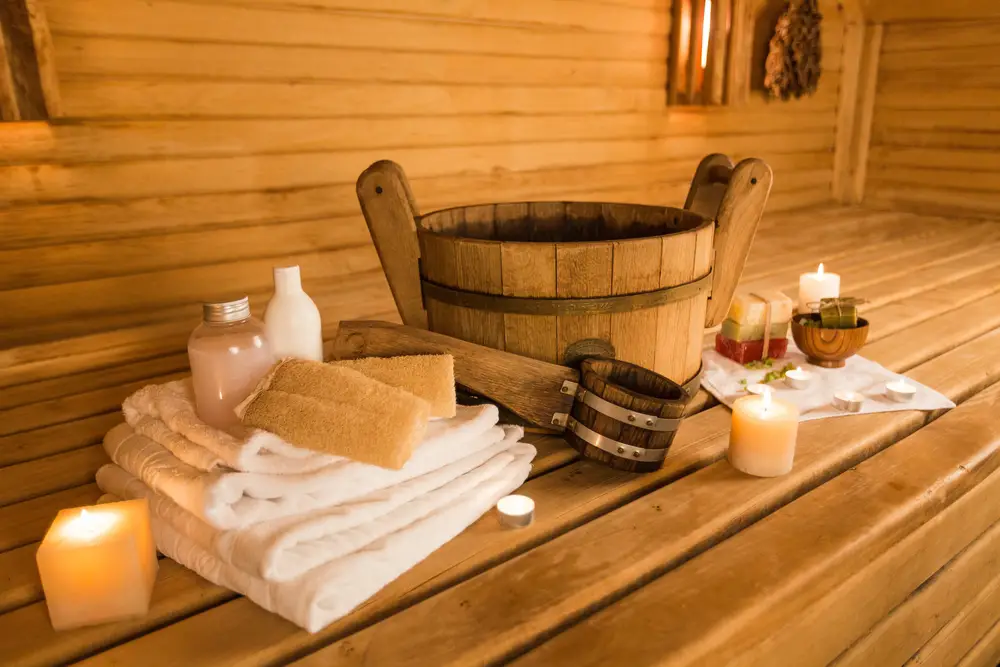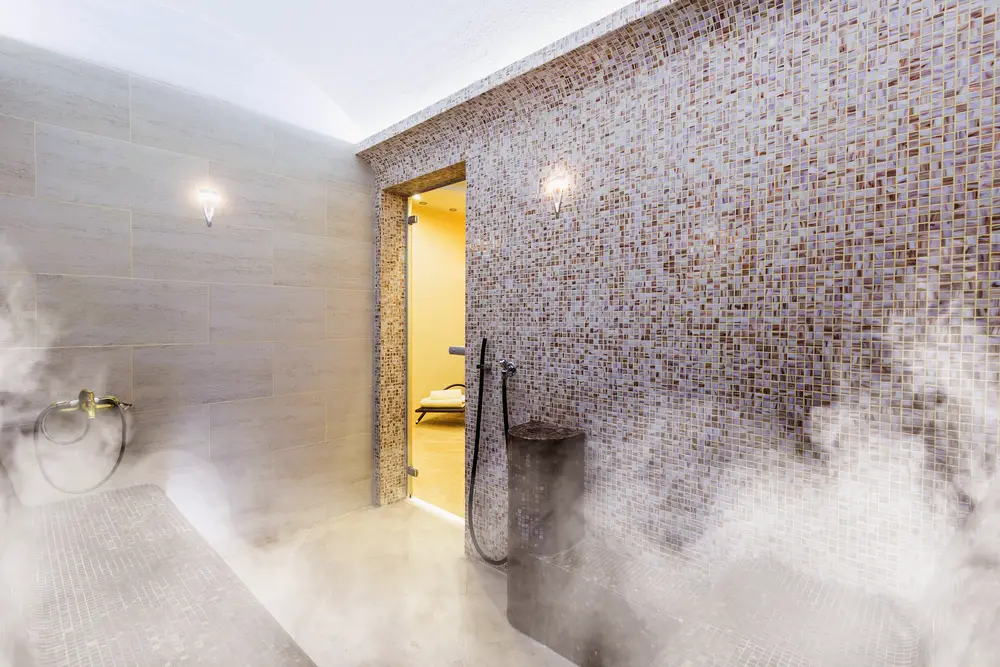Discover the diverse alternatives for designing and arranging your own personal sauna, from classic Finnish traditions to contemporary infrared ideas.
Sauna designs and layouts are plentiful & tailored. Popular choices include Finnish, infrared, steam, and outdoor. Seat arrangements, sizes, materials & accessories like lighting, flooring & sound systems vary. Choose the best fit for your lifestyle, space & budget.

Want to discover more sauna design and layout options? Read on.
What is the objective of a sauna layout introduction?
An introduction to sauna design serves multiple functions. Initially, it gives the reader an overview of the various sauna components and how they are often arranged. The heater, benches, controls, ventilation system, and lights are included. The introduction also provides an overview of how a sauna operates, including the heating of the air, perspiration, and cooling.
Another objective of an introduction to sauna design is to inform the reader about the many sauna kinds, such as traditional Finnish saunas, infrared saunas, and steam saunas. This information assists the reader in determining which sort of sauna best meets their needs, taking into account issues such as personal preferences, health concerns, and money.
The introduction may also include a discussion of the advantages of sauna use, such as increased cardiovascular health, relaxation, stress alleviation, and enhanced skin attractiveness. It may also discuss the history and cultural relevance of saunas in diverse societies, so enhancing the reader’s comprehension of the cultural context in which saunas are utilized.
In addition, the introduction to the sauna layout may highlight crucial safety concerns, such as the significance of maintaining sufficient ventilation and hydration while using the sauna. This information ensures that the reader is aware of the potential risks associated with sauna use and can take precautions to reduce these risks.
What considerations should be made when planning a sauna?
Several important considerations should be taken into account when planning a sauna to ensure a safe and enjoyable experience.
The sauna should be located in an area with access to water and electricity. In addition to privacy, it is essential to consider proximity to the house or other buildings for easy access.
The size of the sauna will depend on the number of people who will utilize it and the available space. Generally speaking, a larger sauna is more comfortable, but it requires more space and resources.
There are a variety of sauna types, such as traditional Finnish saunas, infrared saunas, and steam saunas. Each type has different ventilation, temperature control, and material requirements.
Materials: The materials used to construct a sauna should be safe, long-lasting, and resistant to high temperatures. Cedar, hemlock, and redwood are typical construction materials.
Proper ventilation is essential for preserving air quality and preventing the accumulation of moisture and bacteria. A sauna should have a ventilation system that circulates fresh air and removes excess moisture.
The sauna’s temperature should be controlled by a dependable and accurate thermostat to ensure a safe and pleasurable experience.
The lighting in a sauna should be soft and relaxing, with fixtures that can withstand high temperatures.
How should one approach the interior design of a sauna?
When designing a sauna area, it is essential to evaluate the dimensions and layout of the room where the sauna will be put. Consider accessibility, positioning, and ventilation specifications.
There are numerous varieties of saunas, including traditional Finnish saunas, infrared saunas, and steam saunas, from which to choose. Each variety has its own characteristics and benefits, so it is essential to select the one that best meets your requirements and budget.
Select the heating method: As it is responsible for heating the air, the heater is the most important component of a sauna. There are various types of heaters available, including wood-burning, electric, and gas models. It is essential to choose an effective, dependable, and safe heater.
Benches are crucial in a sauna because they provide seats and a space for users to rest. The type and quantity of benches required will depend on the size and number of users of the sauna.
Install a control system: Saunas require a control system for temperature regulation and safety. The control system should be user-friendly and incorporate a timer and temperature control.
Consider the lighting: lighting plays a crucial part in establishing the ambiance and mood of the sauna. Choose from alternatives such as LED lights, candles, and lanterns.
The materials chosen for the sauna will affect its durability, appearance, and maintenance requirements. Select materials that are long-lasting, secure, and simple to maintain.
You may build a sauna area that is both useful and delightful to use by following these steps and taking into account the major design considerations.
Related Read: Sauna Building Materials and their Benefits
What types of amenities and equipment are typically featured in a sauna?

When designing a sauna, it is typical to incorporate certain amenities and equipment to enhance the overall experience.
The heater is the most important component since it heats the air. There are numerous types of heaters, including wood-burning, electric, and gas models, and it is essential to select one that is efficient, dependable, and safe.
Benches provide people with sitting and a place to rest. The number of necessary benches will depend on the size and number of sauna users. A control system, including a timer and temperature control, is necessary for regulating temperature and ensuring sauna safety.
The ventilation system must provide appropriate airflow and remove excess heat and humidity for sauna safety and comfort. Lighting also plays a role in establishing the ambiance and mood of a sauna, with options including LED lights, candles, and lanterns.
To enhance the sauna experience, buckets, ladles, and thermometers can be added as accessories. The choice of materials will influence the sauna’s durability, appearance, and maintenance requirements, so it is essential to choose materials that are durable, safe, and simple to maintain.
By incorporating these elements, it is possible to create a sauna that is both functional and pleasurable to use.
Reputable sources for information on sauna design and layout options include Sauna World, Saunas.com, and Saunatimes.
When planning a sauna, what safety issues should be taken into account?

Creating a safe sauna necessitates careful consideration of numerous crucial variables. The following are some of the most important safety factors that should be considered:
Ventilation: Proper ventilation is required for sauna safety and user comfort. The ventilation system should be designed to produce sufficient airflow and remove excess heat and moisture from the sauna.
The heater is the most essential component of a sauna since it heats the air. It is essential to choose an effective, dependable, and safe heater.
Controls: Saunas require a control system to regulate the sauna’s temperature and assure user safety. The control system should be user-friendly and incorporate a timer and temperature control.
Materials: The materials chosen to construct a sauna will impact its durability, appearance, and upkeep needs. It is essential to select materials that are long-lasting, secure, and simple to maintain. The sauna should be constructed to be accessible and user-friendly for all users, including those with impairments or mobility challenges.
Illumination: The sauna’s illumination must be adequate and safe, and it must not generate any harmful situations.
Regular maintenance is necessary to preserve the safety and functionality of the sauna. This involves cleaning and inspecting the heater, controls, ventilation system, and additional components.
What procedures must be taken to finalize a sauna plan?
Creating the ideal sauna requires multiple processes to guarantee that the final product fulfills your expectations.
The first step is to study the basic design plan and ensure that the size, layout, and kind of heating system meet your requirements.
In addition, it is essential to ensure that the design complies with local building rules governing fire safety, ventilation, electrical, and plumbing systems.
Selecting construction materials, such as wood for the walls and floor and tiles for the benches, is the next phase.
Then, it is essential to develop a project budget and estimate the cost of materials and labor in order to make educated decisions about the equipment and amenities to be included.
After considering the cost forecasts and analyses, you should finish the design plan and compile a detailed list of specifications.
To ensure that the sauna is installed according to your specifications, you must also use a professional and seasoned constructor.
Once the installation is complete, conduct a comprehensive inspection to ensure that it complies with local building requirements and satisfies your expectations.
By following these instructions, you may design and construct a sauna that will bring years of relaxation and renewal.
Related Read: Types of Home Saunas (traditional, infrared, etc.)

